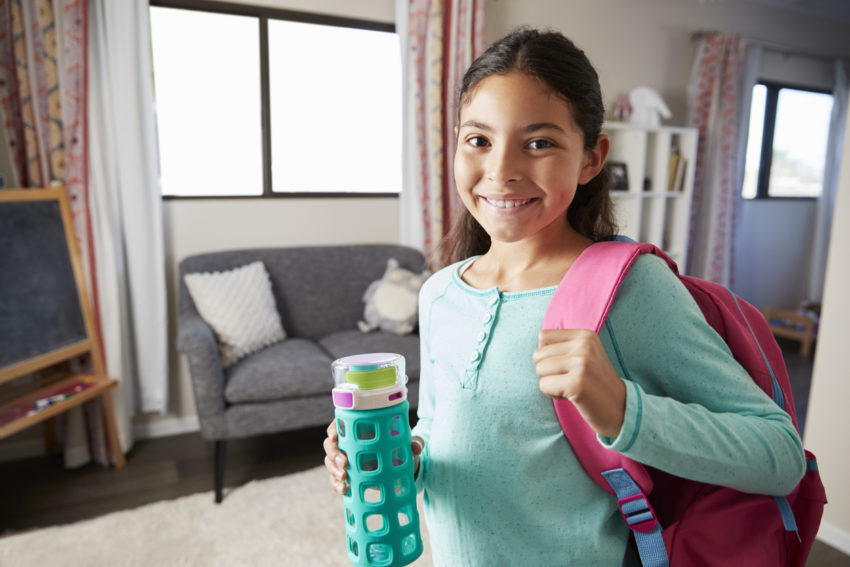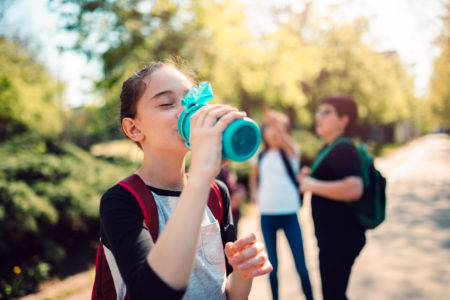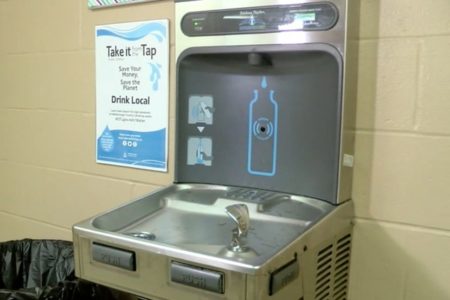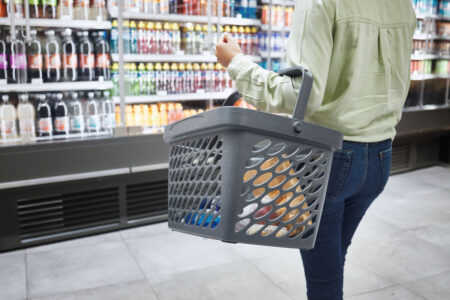
Share On Social!
In Oakland and other California cities, education leaders have launched a new initiative to provide students with clean water through water bottle filling stations in schools.
These filling stations aim to provide not only filtered drinking water to students, they also combat unnecessary plastic waste. In the era of Climate Change, these kinds of programs can often be the first step in making wide-sweeping changes in communities.
Water bottle filling stations can make a big impact on student health and academics, according to water bottle filling station group, FloWater.
“Well-hydrated students have a better chance of performing better in school due to increased focus, improved energy, and added health benefits for the body,” the group writes. “A more sanitary place to fill up a water bottle leads to less spreading of germs and fewer sick days during the school year. The less plastic bottles are available, the more positive impact it has on the planet.
“All it takes is the right solution strategically placed for maximum consumption, which is why it’s important to consider hydration stations for schools.”
New Clean Water Program in Oakland
While the new filling stations will come this year in and around Oakland (27% Latino), the program in which they draw funding has been around for some time.
“As part of the Oakland County Water Bottle Filling Station Program, first implemented in 2017, the county board of commissioners have allocated over $1 million for the purchase and delivery of water bottle filling stations to help school districts replace their aging drinking fountains,” Mark Cavitt with the Oakland Press writes. “Beginning in 2018, school districts were given the opportunity to apply for stations to be delivered to their K-12 schools.”
This program has impacted schools and students across the region. 
The districts that have taken advantage of this new initiative, include:
- Farmington Public Schools: 41 stations (9 schools)
- Huron Valley Schools: 39 stations (11 schools)
- Novi Community Schools: 32 stations (8 schools)
- Oak Park School District: 47 stations (8 schools)
- Oxford Community Schools: 21 stations (9 schools)
- Pontiac School District: 48 stations (9 schools)
- Rochester Community Schools: 21 stations (20 schools)
- Southfield Public Schools: 42 stations (13 schools)
- Waterford School District: 31 stations (16 schools)
Why These Water Bottle Filling Stations are So Important
Many other school districts around the country, like in Washington, Texas, Kentucky, Florida, and Missouri, are moving from classic water fountains to water bottle filling stations.
These kind of initiatives go to do more for students than providing them easier access to drinking water. They can improve overall health.
The key aspect of this is the accessibility these fountains provide, according to water sustainability group, Because Water.
“Childhood obesity currently affects around 17 percent of U.S. kids,” they write. “So, why are schools continuing to invest their dollars in vending machines and sugary beverages instead of drinking stations? The health conditions currently affecting American youth make creating positive lifestyle changes, like drinking water, something schools need to prioritize. Swapping out soda for water is an easy way for young kids to form healthy habits and reduce their intake of unnecessary sugar.
“Safe, clean, and accessible water gives students greater incentive to hydrate more often, contributing to greater energy and productivity.”
For Latino children, access to free and clean water is important — given the disparities in which health issues, such as diabetes and obesity, impact this group.
This has only been made worse by the COVID-19 pandemic, according to Jamie Bussel, senior program officer at the Robert Wood Johnson Foundation.
“We’ve seen these disparities for decades when it comes to childhood obesity rates,” Bussel said. “This year, we’ve also seen people of color and people with low incomes hit hardest by the COVID-19 pandemic. In both cases these outcomes reflect decades of disinvestment in specific communities and specific groups of people, often driven by the systemic racism and discrimination that are still so prevalent in our society.”
The NRDC provides 5 tips to impliment better water practices at your kid’s school:
- Pack filtered water in a water bottle for your child every day (some teachers allow spill-proof water bottles in classrooms)
- Spread the word about safe water concerns by talking to your child’s teacher and the school nurse
- Ask the school principal whether the drinking water has been tested and ask for test results
- Raise drinking water safety and lead concerns with your parent-teacher organization; advocate that your school or the school district install filters to remove lead from drinking water fountains and taps
- Talk to your pediatrician about your concerns regarding lead in drinking water
Get a Water Bottle Fountain at Your School
Want a water bottle filling station at your school?
Sign up for Salud America!‘s Water Bottle Fountain Action Pack where you’ll get:
- Customized, click-to-send emails, graphics & resources to initiate the change
- One-on-one support from an Action Pack Coach
- Promotion of your efforts
ADD A WATER BOTTLE FOUNTAIN IN YOUR SCHOOL!
Explore More:
WaterBy The Numbers
142
Percent
Expected rise in Latino cancer cases in coming years



